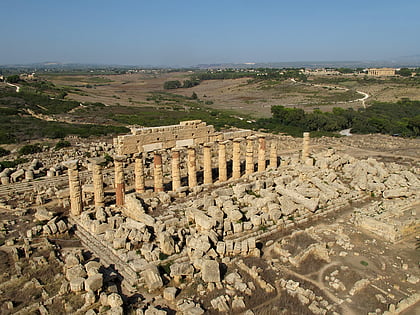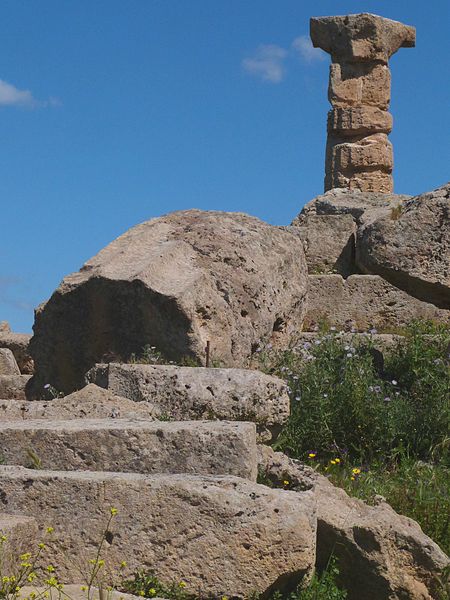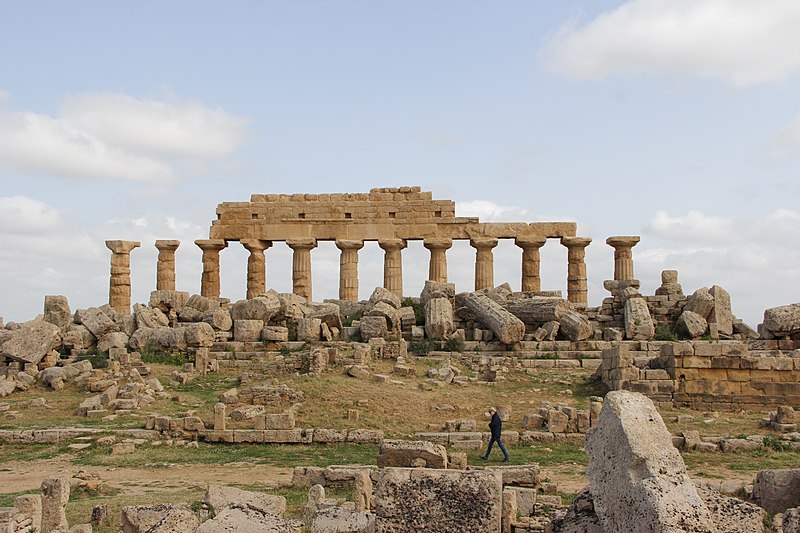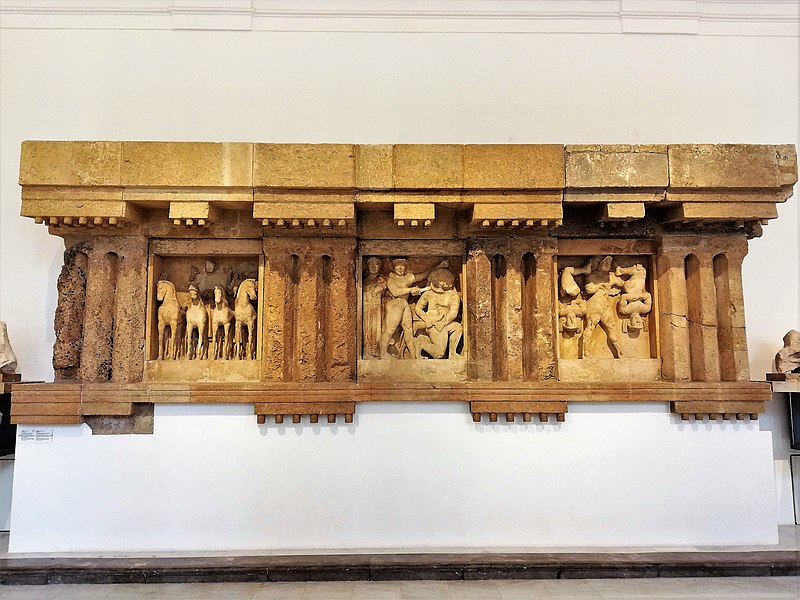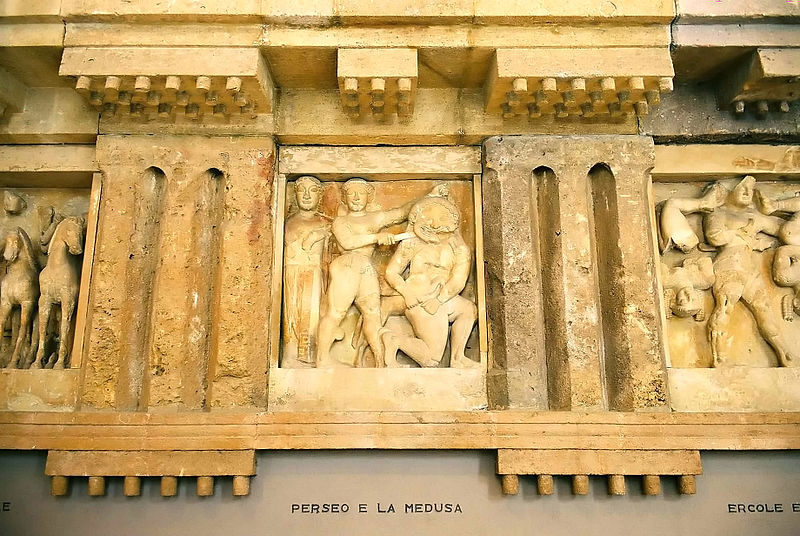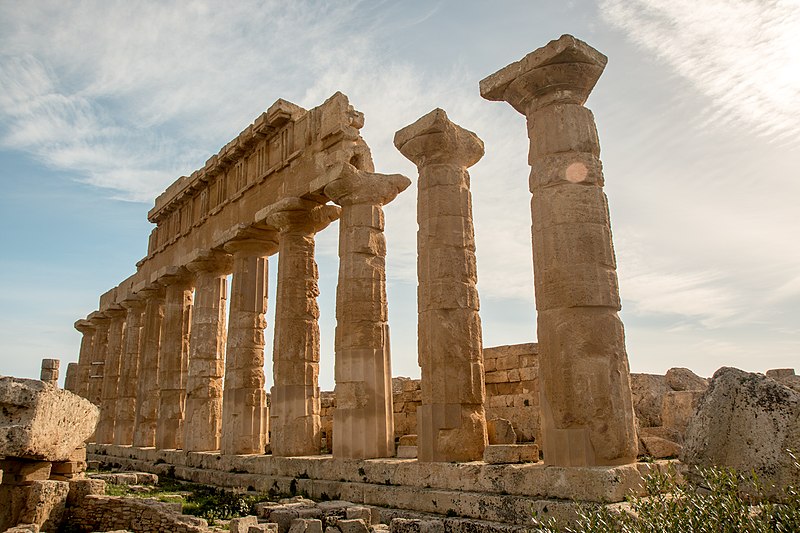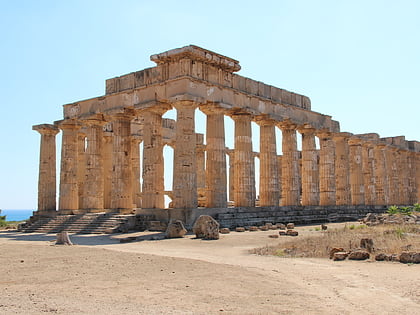Temple C, Selinunte
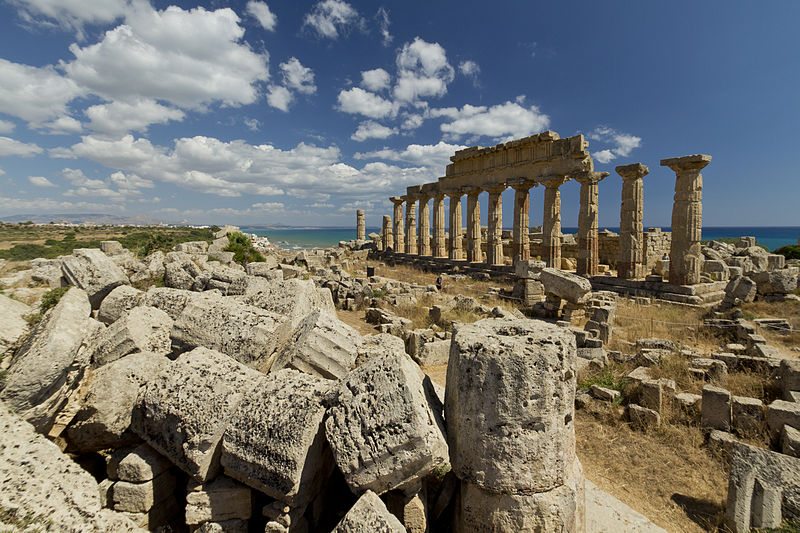
Facts and practical information
Temple C, standing as a testament to the ancient grandeur of Greek civilization, is one of the essential attractions in Selinunte, located in the province of Trapani, Italy. This archaeological gem, part of a larger archaeological park, is a captivating site for history enthusiasts and tourists alike, offering a glimpse into the architectural prowess of the ancient Greeks.
Constructed in the mid-6th century BC, Temple C was dedicated to Apollo, the Greek god of music, harmony, and light. Although time has taken its toll, with many of the original structures in ruins, the temple's remnants still convey the magnitude and sophistication that characterized Greek temples of the era. Visitors can marvel at the remaining columns and the steps leading up to what would have been the main entrance, imagining the grand processions that once took place here.
The temple, characterized by its Doric style, follows the peripteral design with 6 columns on the short sides and 17 on the long sides. Despite not being as well preserved as some of its neighboring temples, Temple C provides a unique opportunity to study and appreciate the early developments of Greek temple architecture.
Located within an extensive archaeological park, Temple C is just one part of a broader historical narrative. Visitors can explore the park to discover other temples, ancient city walls, and the acropolis, which together paint a vivid picture of life in the ancient Greek colony of Selinus.
For the average tourist, a visit to Temple C in Selinunte is a journey back in time. The site is typically open to the public, and guided tours are available, offering educational insights into the historical significance of the temple and its surroundings. Remember to wear comfortable shoes, as the terrain can be uneven, and bring a hat and water, especially during the warmer months.
Selinunte
Temple C – popular in the area (distance from the attraction)
Nearby attractions include: Temple E, Temple F, Riserva naturale Foce del Fiume Belice e dune Limitrofe.
